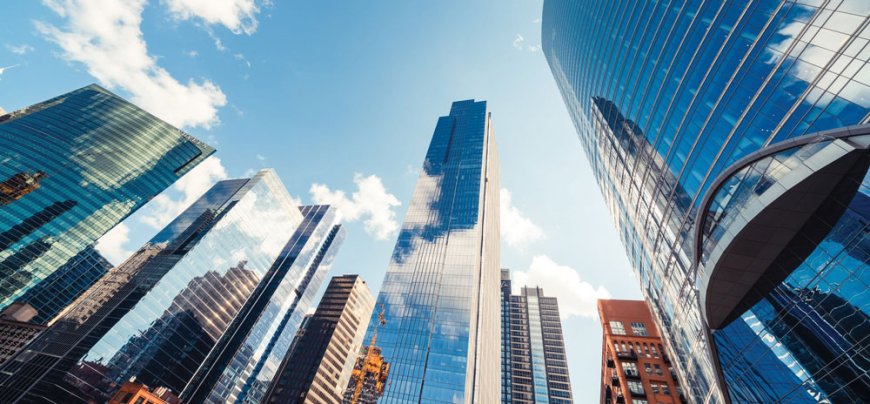We seek to optimise the utilisation of data and technology in green building initiatives.

Shankar Iyer,
Director - Transportation, Smart Cities and Sustainable Infrastructure, Johnson Controls India
How is the concept of green buildings gaining traction in India?
The rise of green buildings in India reflects a broader shift towards sustainability driven by several interconnected factors. One significant driver is the increasing awareness among both developers and buyers regarding the benefits of green buildings. Consumers are becoming more conscious of their environmental impact and actively seeking out sustainable options, which is propelling the demand for eco-friendly properties.
Supporting this, the Government of India has been advancing its green growth mission, emphasizing development with an environmentally conscious approach. Its initiatives, including financial incentives such as subsidies for rooftop solar panels and additional floor area ratio (FAR) for green buildings, serve to incentivize developers to embrace green building practices. Regulatory bodies like the Ministry of Environment, Forests, and Climate Change (MoEFCC) are also contributing to this momentum by offering expedited environmental clearances for green projects.
Leading corporations are now increasingly pursuing alignment with global Environmental, Social, and Governance (ESG) trends and frameworks like the BRSR framework by SEBI, this trend is further driving the adoption of green building practices in India. International standards such as LEED and IGBC certifications are becoming increasingly sought after by developers and buyers alike, further promoting the green building agenda.
In conclusion, the support from multiple quarters - consumers, government initiatives, corporate alignment with global trends, and the adoption of international standards are all contributing to the growing traction of green buildings in India, marking a significant shift towards sustainability in the country's built environment.

What are the technologies and solutions offered by the company in green buildings?
Buildings contribute nearly 40% of global emissions and at Johnson Controls, our priority is to help make buildings more sustainable and energy efficient, providing solutions that meet the specific needs of each building. Our OpenBlue platform serves as a central hub for these offerings, providing interconnected solutions to optimize building operations and promote healthier environments. These include advanced building automation systems powered by IoT and artificial intelligence, which help monitor and adjust building systems in real-time to reduce energy consumption and operational costs while minimizing environmental impact.
Additionally, our energy management solutions enable stakeholders to monitor and regulate energy usage across different building systems, identifying opportunities for energy savings. We also provide renewable energy integration solutions such as solar panels and wind turbines, allowing buildings to generate clean, on-site power. Combined with our advanced HVAC systems, these solutions contribute to a more sustainable built environment. In essence, Johnson Controls is committed to providing a comprehensive suite of technologies and solutions to support green buildings and drive towards a smarter, greener future.
How are your solutions making buildings smarter and sustainable?
Johnson Controls is leading the charge in making buildings smarter and more sustainable. We focus on three main areas: efficiency, electrification, and digitalization. First, we upgrade hardware with energy-efficient equipment, which can save a lot of energy. Then, we switch to eco-friendly options like heat pumps, further cutting down energy use. But the real game-changer is our OpenBlue platform, which connects all building systems and fine-tunes operations, saving even more energy. Additionally, our solutions use IoT and AI to analyze building data, helping operators make better decisions for energy optimization.
Our range of solutions includes efficient HVAC systems, renewable energy integration, and advanced management tools. These not only reduce energy consumption and emissions but also improve indoor air quality for occupants. By combining these technologies with OpenBlue, building owners can significantly reduce their environmental impact while enhancing efficiency and comfort. In summary, Johnson Controls is committed to creating smarter, greener buildings that meet the urgent need for sustainability in the face of climate change.

What is your vision on green buildings? What are your future plans in India for green buildings?
Our vision for green buildings revolves around harnessing advancements in IoT and Big Data to enhance sustainability and energy efficiency. Through the integration of wireless networking technologies, our goal is to stimulate demand for wireless devices, enhance device security, and tackle low power challenges. Moreover, the growing number of connected devices in smart building equipment will provide increased transparency and insight into operations and building performance.
In the context of India, our strategic roadmap for green buildings underscores collaboration, innovation, and seamless technology integration. Last year, at the Indian Green Building Congress organized by CII, Johnson Controls launched a whitepaper outlining the new blueprint for India’s net zero future. The whitepaper addresses the various challenges confronting green buildings in India today and proposes solutions to overcome them.
Our vision for the future remains dedicated to collaborating closely with stakeholders in both the public and private sectors to promote the widespread adoption of green building technologies and standards. Through platforms like India's PM Gati Shakti Platform, we seek to optimize the utilization of data and technology in green building initiatives, thereby accelerating India's transition towards a greener and more sustainable built environment.







